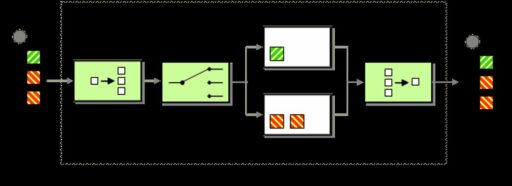Table of Contents
Data types are a fundamental aspect of programming languages, playing a crucial role in defining the nature of data, ensuring its integrity, and optimizing memory usage. This comprehensive guide delves into the various data types across different programming environments including Solidity, JavaScript, SQL, and Python, highlighting their unique features and applications.
Key Takeaways
- Data types are essential for maintaining data integrity and efficient memory allocation across programming languages.
- Solidity offers both primitive and composite data types, with unique constructs like enums and mappings for smart contract development.
- JavaScript’s dynamic typing allows for flexible data assignment, but requires understanding of type coercion and conversion.
- SQL provides a structured approach to data types, with a focus on precision in numeric types and specialized types for dates and binary data.
- Python’s data types are versatile, featuring dynamic typing and powerful collections such as lists, tuples, sets, and dictionaries for efficient data handling.
Fundamentals of Data Types

Definition and Importance
In the realm of computer science and information technology, data types are an essential concept that define the type of data that can be processed and stored by a system. They are fundamental to the structure of programming languages, databases, and data processing algorithms. Data types inform the compiler or interpreter how the programmer intends to use the data, which in turn affects memory allocation, permissible operations, and the method of interpretation of the stored bits.
Understanding data types is crucial because it directly impacts the efficiency and safety of software applications. Proper use of data types ensures that data is stored in a compact form, operations are performed correctly, and the risk of data corruption is minimized. Moreover, it facilitates clear and maintainable code, which is vital for long-term project success.
- Efficiency: Optimal data type selection can lead to more efficient code execution.
- Safety: Correct data types can prevent type-related errors.
- Maintainability: Clear use of data types makes code easier to understand and maintain.
Data types are not just a technicality; they are the backbone of any system that processes information. Without them, the world of computing as we know it would not function.
Primitive vs Non-Primitive Types
In the realm of programming, data types are broadly classified into two categories: primitive and non-primitive. Primitive types are the fundamental data types that include booleans, integers, and characters. They are simple, immutable, and serve as the building blocks for more complex structures. On the other hand, non-primitive types, also known as composite or derived types, are more complex structures that can combine primitive types and even other non-primitive types.
For instance, in languages like Solidity, non-primitive types such as structs and enums allow developers to create sophisticated data models that are essential for smart contract development. These types ensure data integrity and efficient memory usage, which are crucial in a blockchain environment where resources are limited and expensive.
The correct use of data types is vital for robust and efficient programming. It not only optimizes resource usage but also maintains consistency across the codebase.
Here is a brief overview of the types:
- Primitive Types: Basic, immutable types like booleans, integers, and characters.
- Non-Primitive Types: Complex structures like arrays, structs, and enums that can hold various primitive types and offer more functionality.
Memory Allocation and Data Integrity
Understanding how data types manage memory allocation is crucial for efficient programming. Primitive data types are typically allocated on the stack, which allows for quick access but limited space. Non-primitive types, on the other hand, are often stored on the heap, which provides more flexibility at the cost of performance.
Efficient memory allocation is essential for maintaining data integrity and optimizing performance. It ensures that each variable is stored in an appropriate location in memory, reducing the risk of data corruption and improving the overall efficiency of the program.
Memory allocation also impacts data integrity. A well-defined data type system prevents type-related errors and ensures that operations on data are predictable and safe. For example, attempting to perform arithmetic on a string can lead to unexpected results or errors. By enforcing strict data type rules, programming languages help maintain the correctness of data throughout the lifecycle of a program.
Here is a summary of memory allocation characteristics for common data types:
| Data Type | Memory Allocation | Description |
|---|---|---|
| bit | 1 bit | Can be 0, 1, or NULL |
| tinyint | 1 byte | Whole numbers from 0 to 255 |
| smallint | 2 bytes | Whole numbers from -32,768 to 32,767 |
| int | 4 bytes | Whole numbers from -2,147,483,648 to 2,147,483,647 |
| bigint | 8 bytes | Whole numbers from -9,223,372,036,854,775,808 to 9,223,372,036,854,775,807 |
Data Types in Solidity

Primitive Types in Smart Contracts
In the realm of smart contracts, primitive types form the foundation upon which more complex structures are built. Solidity, the programming language predominantly used for Ethereum smart contracts, defines several primitive types that are essential for developers to understand.
bool: Represents Boolean values (trueorfalse).int/uint: Signed and unsigned integers, respectively. Sizes can vary, such asint256oruint256.address: Specific to Ethereum, used for storing addresses.string: For dynamic-length string data.bytes,bytes32: For dynamic and fixed-size byte arrays, respectively.
These types are crucial for ensuring that smart contracts operate with the intended logic and efficiency. The correct use of data types is not just a matter of syntax but a critical aspect of smart contract security and performance.
Understanding and utilizing these types effectively is a key skill for any blockchain developer. Each type comes with its own set of operations and limitations, which must be carefully considered when writing smart contracts.
Composite Types and Their Uses
In Solidity, composite types are essential for creating more sophisticated data structures that go beyond the capabilities of primitive types. These types include arrays, which can be dynamic or fixed in size and can contain elements of any data type, including other composite types. Structs are another powerful feature, allowing developers to define new types by grouping variables together.
- Arrays: Support both primitive and composite types.
- Structs: Group together variables of various types.
- Enums: Define a set with a limited number of constant values.
- Mappings: Key-value stores for associating unique keys with values.
Composite types are pivotal in managing complex data and ensuring that smart contracts can handle a variety of real-world applications. They provide the structure and flexibility needed to represent intricate relationships and state within a contract.
Specialized Solidity Constructs
In addition to the basic and composite data types, Solidity offers specialized constructs that enhance the functionality and efficiency of smart contracts. Enums are a way to create user-defined types with a finite set of constant values, which can be used to represent states or categories. Structs, on the other hand, allow developers to define new types by grouping several variables, much like a traditional class in object-oriented programming.
Solidity’s specialized constructs are designed to ensure that smart contracts can handle complex logic and state management efficiently, while maintaining the integrity and security of the blockchain.
For instance, a contract might use an enum to define user roles and a struct to represent a user with attributes like name and balance. Below is a simplified representation of how these constructs might be used:
- Enum:
UserRole { ADMIN, USER, GUEST } - Struct:
User { string name; uint balance; }
These constructs are integral to Solidity and provide the necessary tools for developers to create sophisticated and secure decentralized applications.
JavaScript’s Dynamic Typing

Understanding Primitive Data Types
In JavaScript, primitive data types are the simplest forms of data, each representing a single value. They are immutable, meaning that once a value is created, it cannot be changed. JavaScript supports several primitive data types, which are foundational to programming in the language.
The following list outlines the primary primitive data types in JavaScript:
- Number: Includes both integers and floating-point numbers.
- String: Represents sequences of characters.
- Boolean: Can be either
trueorfalse. - Undefined: Indicates a variable that has not been assigned a value.
- Null: Represents the intentional absence of any object value.
- Symbol: A unique and immutable primitive introduced in ES6 for creating private identifiers.
Understanding these types is crucial for effective coding, as they determine what kind of operations can be performed on a given piece of data.
Each data type serves a specific purpose and has associated operations. For instance, arithmetic operations are suitable for Number types, while string concatenation is used with String types. Recognizing and utilizing these data types correctly is essential for writing clean and efficient JavaScript code.
Working with Objects and Functions
In JavaScript, objects are fundamental for structuring complex data and behavior. They are collections of key-value pairs, where keys are typically strings and values can be any data type, including other objects or functions. For instance, creating a simple person object involves defining properties and values:
let person = {
name: 'sadanand',
age: 30,
isStudent: false
};
Accessing and modifying these properties is straightforward:
console.log(person.name); // Output: sadanand
person.age = 31;
JavaScript’s dynamic nature allows for flexible manipulation of objects, such as adding or removing properties on the fly.
Functions, as first-class citizens, can be stored in objects as methods, allowing objects to encapsulate not just data but behavior as well. The use of functions in conjunction with objects enables powerful programming patterns.
Common use cases include form validations, user authentication, and data manipulation. For example, managing user sessions with objects that store user information is a typical scenario in web development.
When working with multiple objects or arrays, the spread operator and destructuring assignment are invaluable tools:
- Destructuring allows for easy extraction of object properties into variables.
- The spread operator is useful for combining arrays or objects.
Adhering to best practices, such as consistent use of const and let, clear naming for booleans, and using template literals, can greatly improve code readability and maintainability.
Type Coercion and Conversion
In JavaScript, type coercion refers to the automatic or implicit conversion of values from one data type to another. This occurs when operators and functions attempt to operate on values that are not of the expected data type. Understanding how JavaScript coerces types is crucial for writing predictable code and avoiding bugs.
Type conversion, on the other hand, is an explicit process where developers convert values between different types using functions or methods. JavaScript provides built-in methods for converting strings to numbers, numbers to strings, and so on. Here’s a quick reference for some common type conversions:
String(value): Convertsvalueto a string.Number(value): Convertsvalueto a number.Boolean(value): Convertsvalueto a boolean.
Implicit coercion can lead to unexpected results, especially when dealing with the loose equality operator ==. It’s often recommended to use the strict equality operator ===, which does not perform coercion, to ensure accurate comparisons.
While JavaScript’s dynamic typing offers flexibility, it also demands a thorough understanding of type coercion and conversion to maintain code quality and functionality.
SQL’s Structured Data Types

Numeric Types and Precision
In SQL, numeric data types are categorized based on their precision and scale. Precision refers to the total number of digits that a number can contain, while scale specifies the number of digits that can appear after the decimal point. These properties ensure that numeric data is stored and processed with the exactness required for financial calculations, scientific data, and other precision-sensitive applications.
| Data Type | Precision (p) | Scale (s) | Storage Size |
|---|---|---|---|
| numeric(p,s) | Up to 38 | Up to 38 | 5-17 bytes |
| decimal(p,s) | Up to 38 | Up to 38 | 5-17 bytes |
| float(n) | -1.79E+308 to 1.79E+308 | Variable | 4 or 8 bytes |
| real | -3.40E+38 to 3.40E+38 | Variable | 4 bytes |
| money | -922,337,203,685,477.5808 to 922,337,203,685,477.5807 | Fixed | 8 bytes |
The choice of numeric type affects not only the precision but also the performance of SQL operations. It is crucial to select the appropriate type based on the nature of the data and the required level of accuracy.
Approximate numeric data types like float and real offer a wide range but with the trade-off of precision, suitable for scientific calculations where exactness is less critical. On the other hand, exact numeric types such as numeric and decimal are ideal for financial data where precision cannot be compromised.
Character and Binary Types
In SQL, character and binary types are essential for storing text and binary data. Character types include CHAR for fixed-length strings and VARCHAR for variable-length strings, both crucial for storing textual data efficiently. Binary types, such as BINARY and VARBINARY, store data that is not intended to be human-readable, like images or encrypted data.
SQL’s character types also support Unicode, allowing for the representation of a vast array of characters from different languages. The NCHAR and NVARCHAR types are specifically designed for Unicode strings, with NVARCHAR(max) allowing for storage up to 2GB of text data.
| Data Type | Description | Maximum Size |
|---|---|---|
CHAR |
Fixed length string | 255 characters |
VARCHAR |
Variable length string | 65535 characters |
NCHAR |
Fixed length Unicode string | 4000 characters |
NVARCHAR |
Variable length Unicode string | 4000 characters |
NVARCHAR(max) |
Variable length Unicode string | 2GB of text data |
Binary types are optimized for performance and can handle large amounts of data that do not require text processing, making them ideal for certain applications.
Date, Time, and Other Specialized Types
SQL databases offer a variety of specialized data types to handle specific kinds of data, such as dates, times, and unique identifiers. Understanding these specialized types is crucial for designing efficient and accurate database schemas. For instance, the datetime type is essential for recording moments in time with precision, while uniqueidentifier is used for creating globally unique IDs.
Here’s a quick overview of some specialized SQL data types:
| Data Type | Description | Range or Format | Storage Size |
|---|---|---|---|
date |
Stores date (Year, Month, Day) | January 1, 0001 to December 31, 9999 | 3 bytes |
time |
Stores time (Hours, Minutes, Seconds) | – | 3-5 bytes |
datetime |
Stores date and time | January 1, 1753 to December 31, 9999 | 8 bytes |
datetime2 |
Stores date and time with high precision | January 1, 0001 to December 31, 9999 | 6-8 bytes |
smalldatetime |
Stores date and time with minute accuracy | January 1, 1900 to June 6, 2079 | 4 bytes |
datetimeoffset |
Stores date, time, and time zone offset | – | 8-10 bytes |
timestamp |
Unique number for row modifications | – | – |
When working with SQL, it’s important to choose the right data type for the task at hand to ensure data integrity and optimize performance.
In addition to these types, SQL also supports xml for storing XML formatted data, and sql_variant which can hold values of various supported SQL data types, excluding some like text and timestamp. As the website page covers a wide range of data-related categories and technologies, delving into these types provides a solid foundation for further exploration in data science, including topics like SQL vs NoSQL, and algorithms such as random forest.
Python’s Versatile Data Types

Basic Types and Operations
In Python, the foundation of data handling lies in its basic types and operations. Numeric types such as integers and floating-point numbers are the bedrock for mathematical computations. Strings, characterized by their sequence of characters, are versatile for text manipulation. Booleans, representing True or False, are pivotal in control flow and decision-making.
Python’s operations on these types are intuitive and powerful. For instance, arithmetic operations on numbers, concatenation and slicing for strings, and logical operations with booleans. These operations are not just fundamental; they are the tools that enable Python’s expressiveness and ease of use.
Here’s a quick reference for some of the basic types in Python:
- Numeric: Integers (
int), Floating-point numbers (float) - Sequence Type: Strings (
str), Lists (list), Tuples (tuple) - Boolean:
TrueorFalse(bool) - Set: Unordered collections of unique elements (
set) - Dictionary: Key-value pairs (
dict) - Binary Types:
bytes,bytearray,memoryview
Python’s dynamic typing system means that the type of a variable is determined at runtime, which adds a layer of flexibility but also requires a careful approach to ensure data integrity.
Collections: List, Tuple, Set, Dictionary
In Python, collections are fundamental data structures that include Lists, Tuples, Sets, and Dictionaries. Each serves a unique purpose and has its own set of characteristics. Lists are mutable sequences, allowing for dynamic modification of their contents. They are ideal for storing an ordered collection of items, which can be accessed by their index.
Tuples are similar to lists in that they are ordered collections of items, but they are immutable. Once a tuple is created, it cannot be altered, making it a reliable data structure for fixed data sequences.
Sets are unordered collections of unique elements. They are highly efficient for checking membership and eliminating duplicate entries. Sets are mutable, but the elements contained within must be immutable.
Dictionaries are powerful data structures that store key-value pairs. Unlike sequences, dictionaries are unordered, and the keys provide a fast way to access the corresponding values. They are incredibly versatile and can be used to represent complex information.
Python’s collection types are not just a means of storing data but also provide a rich set of operations to perform on that data, making them indispensable for various programming tasks.
Special Types and Type Checking
Python’s dynamic nature extends to its data types, offering a range of specialized types that cater to various programming needs. Python’s special data types enhance the language’s flexibility and are pivotal for advanced data handling and manipulation. For instance, the NoneType, representing the absence of a value, is crucial in functions that may not return a value explicitly.
Python also provides modules for type checking, such as typing, which introduces more nuanced types like Optional, Union, and Any. These types are instrumental in making Python code more explicit and type-safe, especially when dealing with complex data structures.
Optional[T]: Allows a variable to be of typeTorNone.Union[T1, T2]: A variable can be of typeT1orT2.Any: Accepts any type, useful when the type is unknown or not important.
Python’s type system, while flexible, encourages developers to write clear and maintainable code by utilizing these special types and type checking mechanisms.
The exploration of Python data types is not just theoretical but also practical, with top data visualization tools relying on these types to effectively represent and manipulate data. Understanding and using these types correctly is a cornerstone of efficient data collection strategies and robust programming.
Conclusion
Throughout this comprehensive guide, we’ve explored the diverse world of data types across multiple programming languages and databases, including Solidity, JavaScript, SQL, and Python. Understanding data types is fundamental to programming, as they dictate how we store, manipulate, and manage data. From primitive types like integers and booleans to complex structures like mappings and enums, each data type serves a unique purpose and offers different capabilities. As we’ve seen, the correct application of data types can lead to more efficient, reliable, and maintainable code. Whether you’re developing smart contracts, dynamic web applications, or robust databases, a solid grasp of data types is essential. We encourage you to continue experimenting with these data types in your projects and deepen your understanding of their nuances and best practices.
Frequently Asked Questions
What are data types and why are they important?
Data types are classifications of data that inform the compiler or interpreter how the programmer intends to use the data. They are important because they help ensure data integrity, consistency, and efficient memory allocation, which optimizes resource usage and is crucial for robust programming.
What is the difference between primitive and non-primitive data types?
Primitive data types are basic types that include booleans, integers, and floats, among others. Non-primitive data types, such as structs, arrays, and enums, are more complex and can combine primitive types and other non-primitive types.
How do Solidity data types differ from those in other programming languages?
Solidity has unique data types suited for smart contract development on the Ethereum blockchain, including address, uint, and bytes types, as well as composite types like structs, enums, and mappings that are designed to work with the Ethereum Virtual Machine (EVM).
What are the characteristics of JavaScript’s dynamic typing?
JavaScript’s dynamic typing means that variables do not have a fixed data type and can hold values of any type without explicit type declaration. This allows for flexibility but also requires understanding of type coercion and conversion.
What are some examples of SQL data types and how are they categorized?
SQL data types include numeric types (exact and approximate), character and binary types, and specialized types like date and time. They are categorized based on the nature of data they store and their precision.
How does Python handle data types and type checking?
Python is dynamically typed but also supports explicit type checking. It offers a variety of data types, including numeric, sequence, boolean, set, and dictionary types, and the type() function is used to check the data type of a value.





